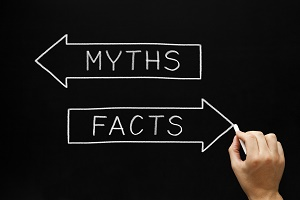ATD Blog
Eradicating the Learning Styles Myth
Wed Jun 10 2015

Ancient peoples invented colorful stories about powerful gods expressing themselves through the physical world. They were trying to make sense of their world, using the only tools available at the time.
Similarly, educators have developed many theories about the learning process over the years. However, now that science has developed tools to test these theories, some of them are proving to be false. Learning styles is one of those former “truths” that many in the field now classify as “myth.
The Learning Styles Myth
Here is the myth in a nutshell: People can be classified based on their learning style. Once we have this information, training will be more effective if delivered in a manner consistent with each learner’s preferred style. Taken to the extreme, this would require the designer to present the same material in multiple ways—video for visual learners, audio for auditory learners, and so on.
Once this idea took hold, a whole cottage industry evolved to provide teachers and trainers tools to help them identify and apply learning styles in their work. It’s big money, but shoddy science. Let’s take a closer look.
Science Examines Learning Styles
This is how science works. We develop a conclusion based on what we know and then we go out and test it. The results of the test either validate the hypothesis, disprove it, or suggest that further research is needed. When held up to this standard, learning styles falls apart.
A recent study published in the Journal of Educational Psychology found “no statistically significant relationship between learning style preference … and learning aptitude.” Multiple studies have reached similar conclusions. As Daniel Willingham states, there is no credible evidence that learning preferences have any impact on the effectiveness of learning. You can access more information on the Debunkers Club site, the home of a group of learning professionals is dedicated to dispelling myths about learning.
However, let’s be clear about what these studies are saying. It may well be true that each of us has a preference for how we receive information. What has been discredited is the belief that training must be aligned with that preference to ensure maximum effectiveness.
The Danger of the Learning Styles Myth
I don’t mean to say that all myths are bad. We’ve been sharing insights into our internal and external worlds with others since we could speak. A good story may lead the learner to a deeper understanding of the content than a simple listing of facts could achieve. However, when a myth directly contradicts fact and leads you to act contrary to that fact it can have negative, even dangerous consequences. Today, many educators are still applying the learning styles concept to customize learning to the individual. We have taught a whole generation that learning should be presented to them according to their preference.
This is a very similar situation to what is happening to the news industry today. The Pew Center recently revealed that more than 60 percent of Americans now get their news primarily from Facebook. Because the Facebook algorithms adjust the content of the news feed by updating friends, likes, and other features the site, over time the news feed become a reflection of one’s own beliefs. It is giving you the news in the way you prefer to see it. But that doesn’t mean it is giving you the truth.
Taking Action
If you are paying for a learning styles testing instrument there is good news. You can stop paying for a useless tool and put your money elsewhere. If you are building courses in multiple modalities to satisfy different learning styles, you can save your energy and develop the most effective training for the content. If you are conducting train-the-trainer or teacher education programs, you can delete the entire learning styles chapter and spend more time on the practical applications of neuroscience to learning. If you encounter a colleague who is not yet aware that learning styles has been largely disproven, you can help them update their understanding.
Coming Clean
When I started this blog series, I stated that neuroscientists were dispelling myths that many learning professionals have believed for decades. I predicted that it was only a matter of time before something I had once presented as fact was disproved by emerging science. That time has come.
Several years ago, I wrote an article for ATD’s (then ASTD) Learning Circuits on how to apply learning styles to build more effective virtual training. It was the first article I ever published and I was very proud of it. I recently asked ATD to remove it. I did this because the information contained in the article could not be supported by available facts.
While we are all learning professionals, we are also learners. The quality of our work is dependent on our ability to incorporate what we learn about learning into practice. Fortunately, we have inherited an exquisitely powerful tool for this purpose: our continuously questioning, exploring and changing brain. Please use it responsibly.
